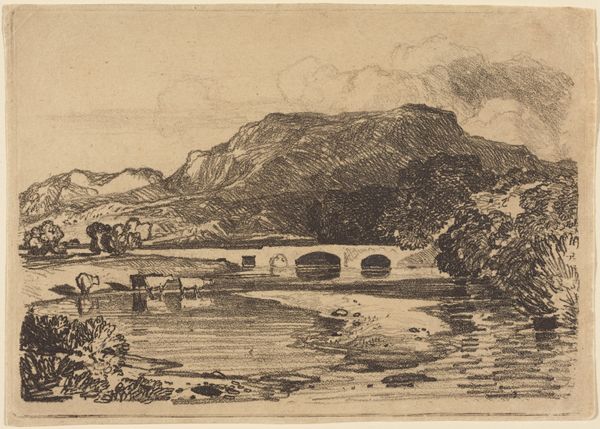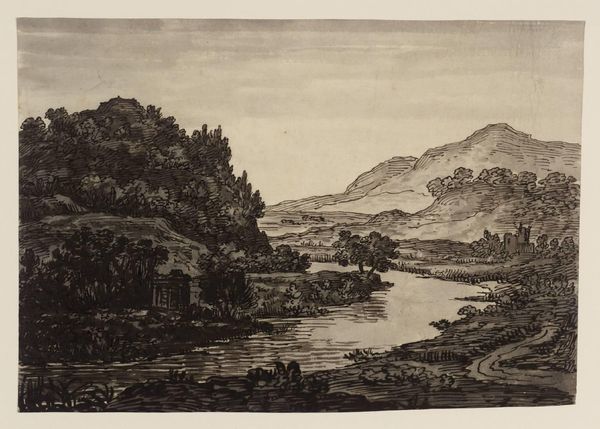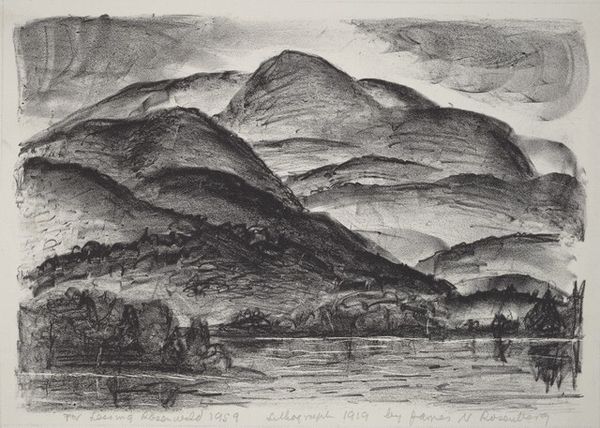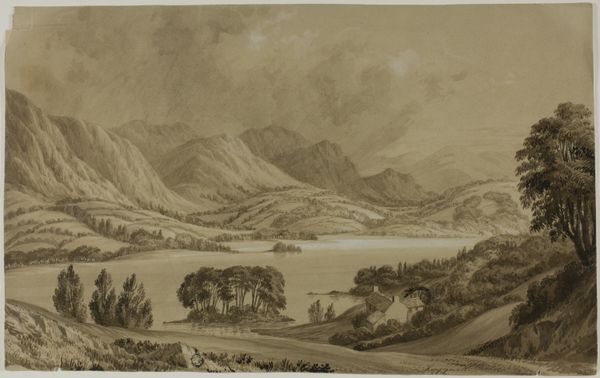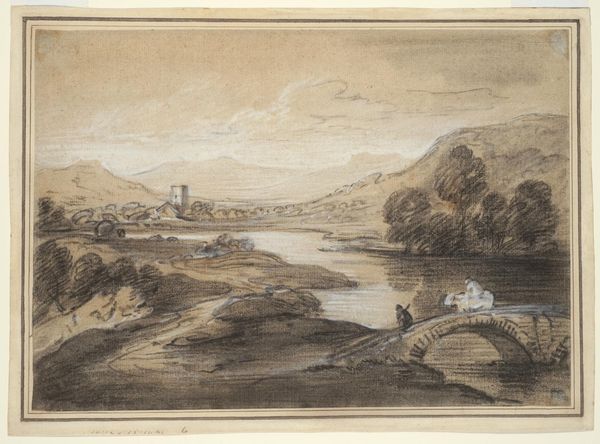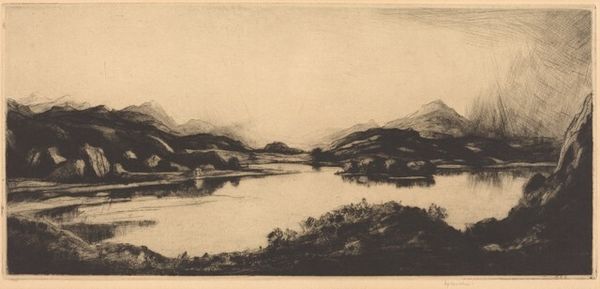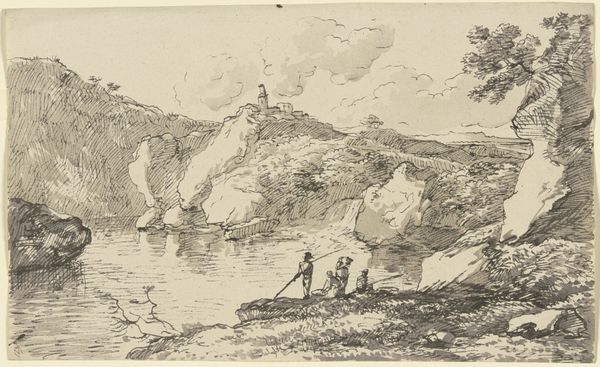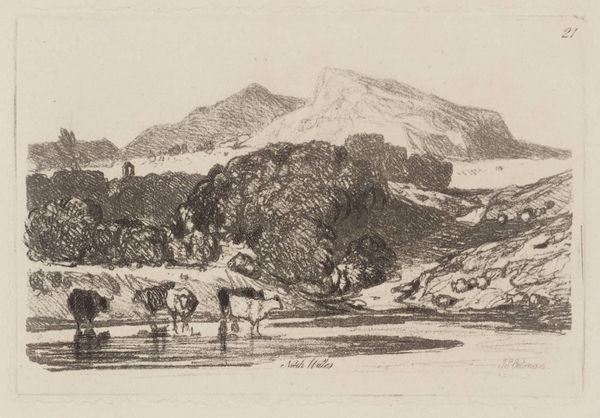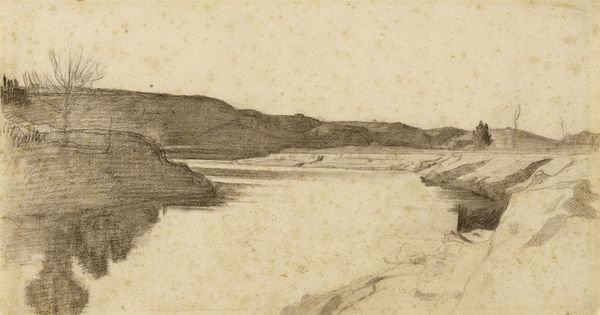
drawing, paper, pencil
#
drawing
#
landscape
#
paper
#
form
#
romanticism
#
pencil
#
line
Copyright: Public Domain: Artvee
Editor: So, here we have "Tan-y-Bwlch, North Wales," a pencil drawing on paper by John Sell Cotman, dating back to around 1806. The scene is so serene; the composition feels very deliberate. What do you see in this piece beyond just a landscape? Curator: I see the beginning of a negotiation—or perhaps a tension—between human presence and the grandeur of nature. We’re looking at this drawing through the lens of Romanticism, but what did landscape mean in early 19th-century Britain? Who had access to these landscapes, and what did their presence signify? Look at those faint cows, barely there! Editor: So, it's not just a pretty picture, it’s about ownership and power? Curator: Precisely! Cotman positions the viewer as an outsider, perhaps even an intruder, looking into a scene imbued with labour and property. The carefully sketched lines hint at both the beauty and the potential exploitation of this environment. How does the industrial revolution feed into the artist’s lens and subsequent artistic decisions, like composition, contrast and even scale? Editor: That makes me reconsider the light, how subdued it is. It's not glorifying the scene; it's documenting it, almost clinically. Curator: Yes, and it makes you wonder, doesn't it, about the relationship between representation and reality? Whose reality are we seeing, and whose voices are missing from this picture? What social and historical realities shaped Cotman’s depiction of the Welsh landscape? Editor: It definitely adds a layer of complexity that I hadn't considered at first. Thanks! Curator: Absolutely! These landscapes, they speak volumes once we start listening critically.
Comments
No comments
Be the first to comment and join the conversation on the ultimate creative platform.

